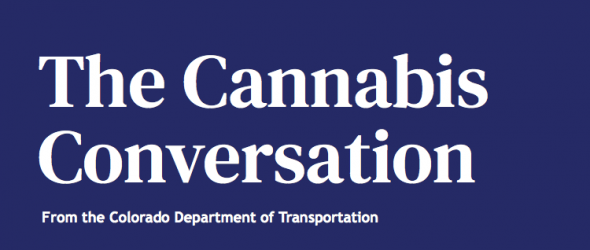State transportation officials are creating new ads with the hopes of discouraging cannabis users from driving while under the influence of the drug.
The ads are being created using insights from the Colorado Department of Transportation’s two-year “Cannabis Conversation” study into how cannabis users across the state feel about driving under the influence. The study wrapped up late 2019, and officials are optimistic about the impact it will have.
“(Colorado State Patrol’s) Greeley Office shares CDOT’s goal of helping people make safe choices,” Captain Ian Whittington of CSP’s Greeley Office wrote in a statement. “Drivers who are impaired by drugs — even if the impairment is slight — pose an unreasonable threat to Northern Colorado, where so many members of the community depend on public highways for their livelihood and for their way of life.”

In 2018, 13.5% of drivers involved in fatal crashes tested positive for cannabis, according to a CDOT news release. Prior surveys released by CDOT suggest driving under the influence is a common phenomenon among the state’s cannabis users. In one survey, more than half of cannabis users reported under the influence in the past 30 days. In another, about two-thirds of Weld County cannabis users reported driving under the influence at least once in the past year.
The first main takeaway from the study was that those who consumed cannabis more often considered driving under the influence to be less dangerous. The more they consumed cannabis, according to state officials, the more respondents talked about individual differences in consumption or tolerance as factors in someone’s ability to drive under the influence.
Many daily users considered driving under the influence of cannabis safe, and some told state officials they drove better after using the drug because they were calmer. Those who drive under the influence often rely on a “gut check,” taking their personal tolerance and past driving experiences, to determine their ability to drive safely. Some were very cautious and took extra precautions when driving after cannabis use, state officials noted.
Whittington said people often partake in risky behavior without realizing how risky it was.
“All too frequently it doesn’t work out OK for people who wake up in the morning (not) expecting that they or a loved one would be involved in a horrible traffic crash,” he said. “But unfortunately, that’s how it typically unfolds.”
Transportation officials found that many cannabis users are highly skeptical of the laws, policies and enforcement for driving impaired. Some who drive after using cannabis dismissed existing research and data because it didn’t ring true with their personal experiences. Most users were sensitive to any messages they perceived as overstating the dangers of driving high, stereotyping cannabis users or unrealistic. Many want nuanced, credible information, according to the study.
Users expressed in interest in research on detection methods, ways to measure their own impairment, dosage-based guidelines for legal limits and specific guidelines on how long to wait after consuming before driving. Some developers have created smartphone apps designed to test users’ impairment, such as DRUID, which uses four tests to judge users’ impairment.
Though messaging focused on the enforcement of laws against driving high may be well-received by those opposed to cannabis, such threats do little to convince or deter cannabis users, according to state officials. Instead, users reported liking safety campaign materials with an honest tone and straightforward approach.
Most users reported there were times they were uncomfortably high or that they knew they were not safe to drive after using cannabis. Transportation officials’ ad concept invoking that feeling of discomfort was the most effective at changing users’ attitudes and behaviors around driving after using, getting those who drive high to feel uncomfortable about that decision and rethink their beliefs. The messaging aims to influence users’ “gut check” they do before driving after using.
“We learned how different groups of people respond to different types of messages — and will use that knowledge to try to influence people to make smart choices,” Sam Cole, CDOT’s traffic safety communications manager, said in a release. “After all, there is no ‘typical’ marijuana consumer.”
Transportation officials will continue to work closely with dispensary companies, a trusted source of information for cannabis users, on in-store education collateral and training for “budtenders,” the salespeople at dispensaries.
Whittington said troopers need the community’s help to make northern Colorado roads safe.
“The decision to drive under the influence of drugs is a lot like other poor decisions that unfortunately people make too often, whether it’s driving while distracted or driving under the influence of alcohol,” he said. “I wish that the community could come together and recognize just how important safe highways are for our community and just how important drivers being committed to giving their full attention to safety is.”
To read the full “Cannabis Conversation” report, go to bit.ly/CannaConvo20.


